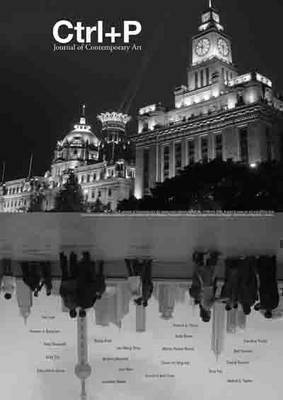"Anyone who listens to an artist needs their eyes examined" -Claus Oldenburg
send us an email
You can track this page with firefox add-ons
| current
issue submissions contact archive 180 studio 180 gallery 180 forum |
Cool Links |
my soundtrack: folkradio.co.uk Kim Taylor |
blog
archive
|
I have long thought about the role of the model to the artist, and will doubtless comment on it again but here is an interview with Jessie Mann, daughter and model for her mother Sally.
http://subjectify.blogspot.com/2008/05/subjectify-interview-five-questions-for.html
It's in several parts but you'll find the rest.
I'm interested in the phenomenon of photography as a mass art form. Almost from the time it was invented, photography has been an outlet for "the masses". Certainly it has been since the Kodak roll-film camera in the 1880s. It would be hard to believe that there are as many people out there writing poetry, singing, painting or dancing as there are snapping away with their point and shoot image-creators.
You must have a good camera
Shortly after that roll-film camera was invented the phrase "Hey that's a great shot, you must have a good camera" had to have been uttered for the first time. This is of course a confusion of technology with art. While the problem isn't unique to photography (the history of pop/rock music comes to mind with the electric guitar, the fuzz box, the wawa bar and all the other gizmos that produce those delicious hooks), it is one of the defining characteristics of photography. Painting may have changed its technology from egg tempra to oil to acrylic, from plaster wall to wooden plank to stretched canvas, but few people would confuse talent with that technology. "Hey, nice painting, you must have great brushes". That's not to say that one can't tell egg tempra from acrylic, they do look different and the artist must paint differently for each.
It's just that the complicated-looking contraption that's in front of the photographer, that thing that goes click and then nothing seems to somehow be doing the work. The camera says click but we don't see the photographer produce anything, no paint on a brush, no pencil and paper, just click and mysteriously, much later, images appear.
With the polaroid and the digital camera we do actually see it now, but somehow that still doesn't convince anyone that the photographer is doing much except pushing the button. The image still comes out of the camera, or worse, sits on the camera itself as if to say "mine, I did this", that guy holding me just pointed and shot.
Well yes you say, that's absolutely true if you're using a point and shoot camera that does all the work for you, makes all the decisions, but if you've got a manual camera (inevitably a more expensive gizmo than the point and shoot) than you're making all the technical decisions, the photographer is calculating the exposure, the focus, selecting the sensitivity. Now it comes down to the photographer's technique!
As if a photographer is going to somehow make a better exposure than the camera's 40 point fuzzy-logic centre-weighted wiz-bang technology. A bit more subtle than the confusion of technology with art is the confusion of technique with art. This is much more general in art ("my kid could draw that") but it certainly exists in photography.
Everything starts to look like a nail
If all you've got is a hammer, everything starts to look like a nail. Popular criticism of photography tends to be technical. If the vox populi doesn't simply say "buy a better camera" it is discussing technique. Your shot is not sharp enough, you're underexposed in the shadows, your highlights are blown, the colour balance is off.
Shoot in raw!!! Where you can fix all this.
A subset of the "read the manual" crowd is the luddite faction that will go on to tell you that your image doesn't have the nice bokeh because your modern lens iris has too few leaves. You'll also hear that nothing beats film for dynamic range (negative film presumably) and that to get a really good exposure you have to use the zone system.
Hey Degas, if you used charcoal from maple instead of that cheap oak stuff your drawings would be smoother. Hey Turner, if you used some yellow filter sunglasses your water paintings wouldn't be so hazy. Hey Van Gogh if you painted with that cadmium yellow instead of eating it.... no wait, that suggestion is probably useful.
Regardless of which end of the gizmo scale a critic speaks from, the technical or the technique tends to come to the front. Rarely in popular discussion forums do you hear comments on the content of a photograph, the place in the history of art, the relationship of the piece to the artist's life. When art history does, rarely, come up it's usually to dismiss the work under discussion. "Weston did that in 1937".
We all tend to speak from what we know and the majority of photographers know their technical manuals, the latest gizmos and popular photograhy magazines which exist to sell more gizmos. (Well technically, they exist to pay their employees who make a living by helping to sell gizmos for the advertisers.) That's the hammer, and the nail is anything that gets your photographs closer to the ones shown in the manual.
So far so good. It's not necessarily a good photograph if you take it with a 12 megapixel SLR, a point and shoot, a Leica with Tri-X, an 8x10 view camera or a Holga. Those are all just different brushes and different colour pallets. It isn't a better photograph if your bokeh is circular and not hexagonal or, horrors, pentagonal. A photograph of a chair on the porch doesn't say anything more to us if it's in hyper-sharp focus and unsharp masked to death. It says something to us if it says something to us.
The tools have to disappear, they have to get out of the way of the content. One of the best ways we can help that along is to stop talking about the tools. Who cares if Barnett Newman used a paint roller or a toothbrush to create "Voice of Fire". The question is not how he created it, it's why did the National Gallery pay $1.8 million for it.
Did Steichen's "Pond-Moonlight" (1904) sell for $2.9 million because it's a gum bichromate or because Steichen is who he is and there's only 3 versions of that print in existance? I don't know how important the technique is, but in that same auction a couple of shots ("nude" and "hands") of Georgia O'Keefe made by Stieglitz in 1919 each sold for over a million dollars, as far as I know they'd be smallish (tiny by today's photographic artwork) silver prints.
Why do those shots have the value they have, monetarily and otherwise? That's where the photographic community needs to go, rather than drooling over the prospect of 10 frames per second in full 35mm sized raw. How many angles on that fly ball being caught by your son do you need? I figure my new digital would give me at least 6 while the old manual wind Spotmatic would have given me 3.
This topic came up on a photographer's forum recently, with specific reference to the nude in nature.
My problem with nude on log, or nude on sand or nude backlit in doorway isn't that the shots are bad, or uninteresting, it's that they are such obvious subjects that they've been done. And done. And done. The nude in nature was a favourite theme of 15th century painters, if nothing else, than as Adam and Eve in the Garden.
So what have I got to contribute to the history of art with my shot of nude on sand? Other than "oh, here's my shot of nude up in tree" I don't have a lot more to say about it.
And of course I've taken nude on log, nude in tree, nude on sand... Why not? They're always interesting shots to look at but ultimately they don't say much.
Adam and Eve in the Garden or Venus rising from the waves may have just enough story to get away with painting naked babe in trees in 1508 or 2008, and I'm sure many see it that way. Religious, ethnological or historical themes may be enough to get it by the religious censors who are still with us. The nakedness may actually have a meaning beyond that excuse, the painting may have some purpose beside "look, see she's got two boobs!" (Unless you've got three my dears, we've seen it before).
So when you take any photograph of a woman with no clothes on you might ask yourself why you're taking it. If it's to see what the girl looks like without clothes on that's perfectly legitimate, but perhaps not very interesting. It might also be more economical to go to a strip bar than spend all that money on camera and computer equipment.
If your reason for taking nude photographs is simply to keep alive our rights to see nakedness and be seen naked... that may also be justification enough right there.
The thing is, when taking nudes you should know why you're doing it. I'm going to be the last one to say that you have to have an artistic statement but you ought to be honest in your own head. If there is some meaning, some point, some artistic statement being made, then the image may even become interesting.
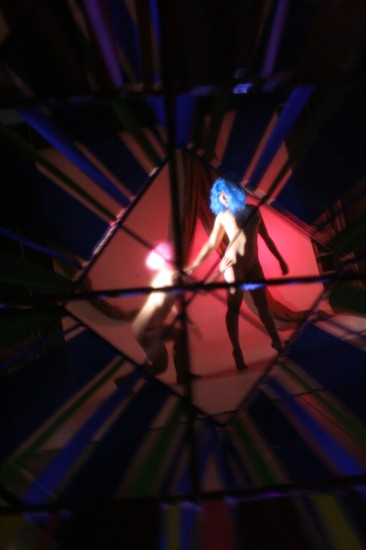
Naked or nude
It's funny what you read when you're thinking about something. Here's what Roland Barthes has to say on the subject in his book Camera Lucida. I read this after writing the above and taking a break to go teach a class. Barthes said:
By unary he means a photograph that follows the common advice (cited from a handbook for amateur photographers) that the subject "must be simple, free of useless accessories; this is called the Search for Unity". What is unary Barthes says, is banal. It can shock, even traumatize, especially if a news photo, but it cannot disturb, it can shout but not wound. They can be glanced through and then forgotten. No detail in some corner interrupts our reading. We may be interested in them but we can't love them.
So, if we want to talk "naked" as clinical, pornographic, than we are talking about a shot that does nothing more than show the body without clothing. It is "without intention and without calculation". It is thought-less either by intent or by accident, there is nothing else beside the naked body to look at or think about.
On the other hand if we assume erotic to mean "nude" than we need something other than the clinical. Other than a perfectly lit, perfectly focused, perfectly bare, perfect body. We need something to catch the attention, divert the eye, cause the mind to wander. We need what Barthes calls the "punctum" the punctuation point that moves us away from looking and forgetting. With the punctum the brain becomes alive and active and the photograph acquires meaning, it become something more than an image to be consumed and discarded.
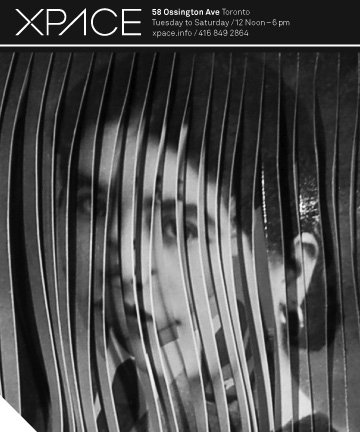
XPACE showcases emerging photo-based artists in the CONTACT Toronto Photography Festival
re- surfaced
Featuring:
Lucilla Bonfanti, Vanessa Kalisz, Margaret Lim, Inessa Radostin,
Sabrina Russo
Curated
by Stuart Sakai
Opening
Reception: Friday May 16th
7pm- 11pm
May 16- June 7 2008
XPACE
Cultural Centre
58 Ossington Avenue, Toronto
Tuesday
to Saturday 12-6
Media Contact: Sarah Todd
Phone:
416-849-2864
Email: sarah@xpace.info
Since
its conception, photography has been used as a tool for preserving the
past. In re-surfaced, artists explore this history while
expanding on the physicality of the photographic object itself.
Lucilla
Bonfanti’s work is rooted in absolution. Bonfanti delves deep into her
past, constructing photographic objects as a means to resolve her
memory. Objects are cut, folded and assembled in different forms,
transcending the confines of the photo album into a new and
commemorative space.
Margaret
Lim forges jewelry featuring photographs of her grandfather, connecting
her familial past with her cultural present. A study of personal
history, Lim utilizes materials and content, which reflect her Asian
heritage while expressing themes of community and identity.
Vanessa
Kalisz weaves photographs of herself, her mother and grandmother
together, exploring genetic resemblance, lineage, and the ties between
generations.
In
Inessa Radostin’s portraits, thread is stitched through eyes of
individuals to create an abstracted horizon. Radostin’s work is a
meditation on the distance between the horizon and the eye, of physical
space and time traversed.
Ctrl+P Journal of Contemporary Art
|
|
|
Cover Image: Neil Stewart
|
Ctrl+P Journal of Contemporary Art1403
EGI Taft Tower |
Ctrl+P Journal of Contemporary Art (And Now China?
Issue No. 11 March-June 2008)
|
|
One of our associates had a shoot yesterday and was using the studio so I was there to assist. He had rented equipment, the AD/stylist had pulled clothes for the models and painted backgrounds, a makeup artist and a hair artist had been arranged and two models had been booked five weeks earlier from an internet modeling portal. All seemed to be set.
Of course the evening before the shoot I got a call that one of the models had cancelled. I immediately sent an email to my "usual suspects" but even the girls who work with me regularly aren't always available. Later that evening another internet model was located so all seemed good once more.
As we began the shoot the next day it soon became apparent that the second model who had initially been booked wasn't going to show up. No email, no phone call, just a straight no-show.
The photographer was a bit upset and uttered various dark oaths while I tried to explain that 19 year old girls are sometimes not the world's most reliable workers, especially those who are used to being told they're pretty and having money spent on them regularly. What is it to them if a photographer spends money on a shoot?
I've been noodling around on the internet modeling sites for many years and it isn't going to get better any time soon. Girls are going to be "models" by putting up a portfolio and those trying to work with them are going to continue to be frustrated. A few girls are going to be worth talking to, most are going to waste your time.
While I rarely look at the places myself now, I do occasionally send out messages on the last site I'm registered (it's still free), usually to local girls who seem to need some portfolio shots. I do this because once in a while you find a gem. Most of the time I end up talking to a girl with webcam shots who wants to charge $50 an hour for "fashion" work and double that for "glamour" shots.
Back to the story, the last minute model turned out to be lovely, and for the second spot I called in my go-to model who came through as usual. Here's a grab-shot of the stylist and hair girls hard at work, I had to share this one because those are the model's "low" heels.
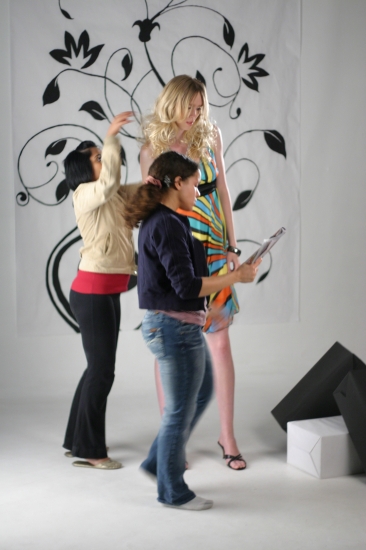
The moral of the story is pretty simple. If you want to work with professionals, deal with professionals. Girls who are agency models show up or don't eat. Girls who aren't self-described models also tend to show up because they're actually interested in the process of making images.
Make a little list, make a little list.
Just what are these internet modeling sites anyway? Originally they were sites for photographers to put up a portfolio so that they could attract business from girls who wanted a portfolio. This used to be great business for local photographers who could, so I've been told, charge $800 for a walk-in shoot. Of course the law of supply and demand kicked in and that fee came down very rapidly to zero as the number of photographers exploded.
Then the models started to post their own portfolios and you had the interesting reversal of photographers paying models. Why? First so that they could learn how to take pictures (what ever happened to taking pictures of your girlfriend?) and then so that the photographer could get a portfolio to attract that business that, unfortunately, didn't exist any more.
Somewhere in there the websites themselves decided to make money by charging for the portfolios. This usually means they charge the photographers (the only ones with money) and leave the model's portfolios free. Why would they do that when it's the models who are making the money? Because the models won't pay and the photographers will. So you get the rather interesting situation where a photographer will pay a website to be allowed to hire the models who use the place for free. The internet has indeed created some unusual business models.
Meanwhile these websites seem not to be any threat to the traditional modeling agencies. Clients will still go to an agency that supplies models who want to work rather than the crapshoot that is the internet modeling portal.
I love the old stuff, the giants of photography from the early part of the 20th century, they're the guys I grew up with. The go-to guys for us '70s kids when we needed inspiration.
The thing is, I don't do much in the way of stories on them in 180 for a very simple reason. They're dead artists. While that's not necessarily a strike against them artistically, it has certain implications.
I was reading the paper this morning and on the front page of the arts section I see that a couple of small Tom Thompson paintings are expected to sell for over a million dollars at auction later this month. The writer goes on to gush about dollars per square inch and how that makes Thompson the tops in value in the Canadian pantheon.
The problem is, Thompson has been dead for almost a hundred years, and in inflation-adjusted dollars I would be willing to bet that he didn't get anywhere near that amount of money per square inch when he sold the paintings in the first place. That first sale would, of course, be the sum total of money Thompson would ever have seen on those paintings, so the subsequent value generated by collector/investors selling to collector/investors is pretty much irrelevent to the artist and the art.
This has all been discussed before by better folk than I so I won't say much more but I do notice that the "art market" imposes some rather interesting notions on the value of an artist, or rather on the value of his work. An artist and his work are more valueable if:
- He's dead
- He created very little before he died (supply and demand don't you know)
- He created enough (there has to be a large enough body of
work to create a collecting community)
- He created a clearly identifiable body of work (didn't branch out too much)
- The provenance of his work is impeccable (especially if
other folks work looks like his)
- He worked alone (it's so hard to decide who's worth what in partnerships)
- A bunch of critics and collector/investors decide he's
worth a lot (after all no painting is pretty enough, no idea great
enough, to be worth a couple million dollars, only an investment is
worth that amount of money)
While I am egotistical enough to assume that I can separate the monetarily popular from the artistically worthwhile, at least for my own educational purposes, the greats have already been chewed over, that's why they're the greats, so there's not much reason for 180 do do it again. I'd rather hunt for those who carry on the tradition of producing art... you know, the ones who are still alive.
Another, more practical consideration for me is that the work of dead artists is firmly in the hands of those who have a financial stake in that work. A lot of the artwork created by the deceased, especially the masters, is firmly locked into stock agencies, family foundations or private collections. The simple upshot of this is that there is a monetary value put on the use of those images. Somebody owns them and I would, in all likelihood be asked to pay. With no budget for this publication, that isn't going to happen. Having acknowledged that, I'm still fairly sure I could get away with using the images in this magazine (or this blog) and claim research or educational value, I just don't like dealing with lawyers. No offence but even when you're right you usually have to pay. I wouldn't mind paying a proportion of the profits I make from this magazine, half of zero? No problem! But the law is more clever than that and there are additional damages that can be awarded. Between my own lawyer bills and potential punitive damages I'd lose even if I won. At the very least I'd be taking down work after putting it up and that's a pain.
I would much rather deal with the folks who create the work, they say yes or no without bringing in the accountants. I would also much rather give some exposure to those who might best benefit from it, those who are creating it.
So to all you collectors out there, take a good hard look at the artists in 180, you can contact any one of them directly, ask any one of them if you can buy a print from them, any print you like. I bet you'll get it for a better price than you would if you wait 50 years and try to buy it at auction from another collector. Never mind that nobody else has said they like the work, if you like it, buy it.
Actually somebody else has said they like the work, it's published here isn't it?
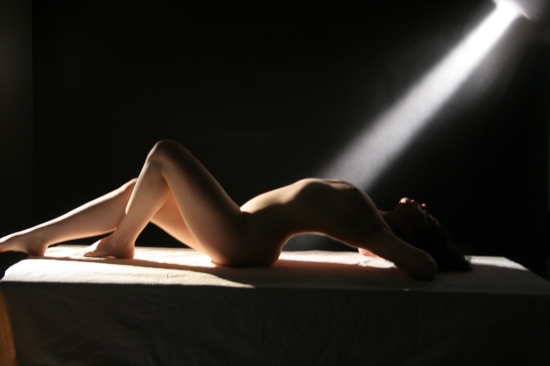
Make me an offer(ing)
RE-ENACTMENTS
Nancy Davenport, Stan Douglas, Harun
Farocki,
Ann Lislegaard, Paul Pfeiffer, Kerry Tribe
Curator: John Zeppetelli
February 22 – May 25, 2008
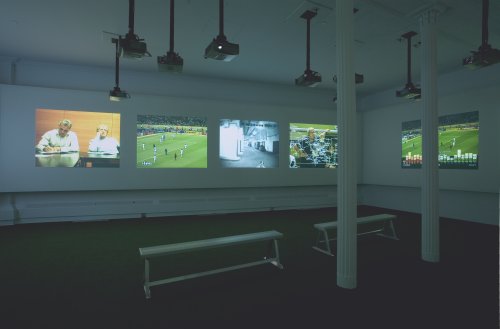
Richard-Max Tremblay
Culture
is a
repository or an archive to be plundered, contested, evoked or edited.
Much contemporary art appropriates, re-imagines or otherwise re-visits
established cultural texts, including popular culture and the history
of art, film, and performance. The aim is to generate new meanings and
fresh relevance from this source material, often by reiterating its
value in the form of homage or deflating its claims with critique, but
always by rerouting it to mysterious and unexpected places.
DHC/ART
Foundation radically transforms its spaces for a major media art
exhibition. Re-enactments gathers six
artists whose work, in some way, critically re-stages films, media
spectacles, popular culture and, in one instance, the intimate moments
of daily life. Some of the projects offer bold objectifications of our
image-saturated world, while others trigger poetic confusion between
memory, fact and fiction. By vividly addressing politics, spectacle and
subjectivity these re-workings of cultural texts or events of the past
pose compelling questions about the present.
Jean-Luc Godard is the inspiration for two works in the exhibition: Kerry Tribe uses Godard’s experimental television masterpiece France/tour/détour/deux/enfants, made with Anne-Marie Miéville, as the starting point for her poignant dual-screen installation Here & Elsewhere; whereas the extraordinary tracking shot in Godard’s film Le Weekend is the basis for Nancy Davenport’s Weekend Campus, a slow horizontal pan - composed of hundreds of still photographs - over a cataclysm of stalled cars, gruesome accidents and impassive witnesses set at the entrance of a university. Two earlier moments in film history by the Lumière brothers and Georges Méliès are referenced in Davenport’s Workers (leaving the factory) – a speculative, multi-screen take on labour and globalisation. Stan Douglas’ two-projector, single-screen film installation Inconsolable Memories uses the Cuban film classic Memories of Underdevelopment as its foundational text. Douglas’s “recombinant” installation complicates the original by manifestly displacing its time frame.
Notorious
televised sports and entertainment spectacles inform the three projects
on view by Harun Farocki and Paul Pfeiffer. Farocki’s Deep
Play subjects the 2006 World Cup Final between France and
Italy to a stunning formal, scientific, and statistical vivisection
over twelve synchronised, real-time video projections. Michael Jackson
is the subject of two Paul Pfeiffer works,
Live
Evil (Bucharest), a small, two-projector piece
which shows a quasi-mirrored image of Michael Jackson in performance
while visualising the palindrome of the title, and Live
From Neverland, an eerie meditation on the pop star’s
hugely documented child molestation trial. While not directly inspired
by a film or television text, Ann Lislegaard’s I-You-Later-There
nonetheless evokes the cinematic experience. The re-enactment in this
work consists of a strong halogen light pulsing to the chant-like
thoughts of a female voice onto a rectangular surface made of
floorboards, which becomes a screen or a stage, complete with the
sounds of a creaking floor.

451 St-Jean
Street in Old Montreal
(please note the exhibition continues at 468 St-Jean)
Montreal, Quebec
Opening
Hours:
Wednesday to Friday from 12 PM – 7 PM
Saturday and Sunday from 11 AM – 6 PM
Information:
Cheryl Sim – Program Coordinator
(514) 866-6767 ext. 206 / cheryl@dhc-art.org
In Chapter 14 of his "Camera Lucida" Barthes states what he assumes is the essential gesture of the photographer; to surprise something or someone. This is to create a "shock". He goes on to list the types of shock.
The shock of the rare. This is the photograph of the monstrous or the freakish.
The shock of the invisible (gesture apprehended at the point where the normal eye cannot arrest it). The hand in mid-movement.
The shock of prowess. Harold Edgerton's high speed strobe photographs.
The shock of the contortion of technique. The deceptive perspectives and trick framing of an Andre Kertesz or William Klein.
The shock of the lucky find. As in Kertesz' windowpane with two busts looking out.
He goes on to say that the photograph becomes surprising when we do not know why it was taken. The egg on a naked belly, the backlit nude in a doorway.
His final point is that photography photographs the notable, but by familiar reversal, it soon happens that whatever is photographed becomes notable.
And here we sit, 28 years after this book was written. The amateurs still shoot their backlit nudes in the doorway, the art school crowd shoots their garbage blowing around, down in the street, the technicians still work away on their extreme dynamic range panoramas.
It's a wonder that anyone shoots anything any more. Perhaps there is value in the old saying that "ignorance is bliss". After all the very first photographs known to exist are of rooftops and windows, just whatever happens to be in front of the camera when it starts to work. How many shots have been taken over the last 5 years of "the inside of the camera shop" or, more adventurous "the mall corridor outside the camera shop". By the idea that "whatever is photographed is important", in the race for the most banal, that shot in the camera store is going to be pretty close to the ultimate photograph.
I'm not making fun here, the simple act of creating an image is enough for me to take a picture. I shoot fog, dew on the grass, drops on twigs, the dust on the dashboard of my car, my bluejeans, just about anything at all when I get the urge to photograph. Absolutely none of this is shocking, not even by the very banality of the images. I don't take a photograph of cutlery on my breakfast table to make an artistic statement about the changing value of that image before and after it was photographed. I take the photograph because I like the process of taking the photograph.
Photography can be as soothing in its meaninglessness as it can be shocking.
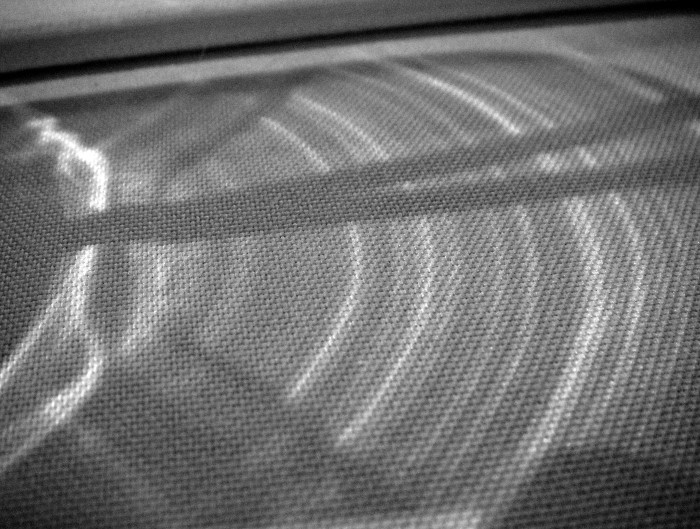
Restaurant placemat, light through waterglass.
Benefit Auction of Historical and Contemporary Photographs
Saturday May 24, 2008

James Nasmyth, The Lunar Apennines, Archimedes, Plate IX from "The Moon: Considered as A Planet, A World, and A Satellite" John Murray, London, 1874, Woodburytype, 20 cm x 16cm
Please join Presentation House Gallery for its annual Gala Fundraiser on Saturday May 24 at Metro Restaurant, Vancouver. An evening not to be missed, the fundraiser is an opportunity to show your support for one of Canada’s premier public art galleries, recognized internationally for the high calibre of its programs of photographic and media art. The event offers rare and important historical and contemporary photographic art for purchase, and a chance to add to or even begin your collection with works selected by the gallery’s curatorial team.
The evening will include both a live auction and silent auction of limited edition and unique prints by notable photographers of our time as well as today’s most significant emerging artists. Historical prints of local interest and classics from the history of photography are also available. This year’s highlights include limited edition photographs by emerging Vancouver artists Cedric Bomford and Owen Kydd, renowned artists including Anne Collier, Pascal Grandmaison, Simon Starling, Ian Wallace and Richard Prince as well prints by W. Eugene Smith, Fred Herzog and Jacques Henri Lartigue among many others.
The event will also feature the world premiere of an artist’s edition by Annette Kelm.
Tickets: $150 includes valet service, wine & dinner
Dress: Cocktail
Location: Metro Restaurant, 200 Burrard Street in Waterfront Centre, Vancouver
Online Preview: www.presentationhousegall.com
Inquiries and tickets: 604 986 1351 or auction@presentationhousegall.com
Presentation House Gallery’s 2008 Fundraising Auction is generously sponsored by Odlum Brown Limited.
With wine specially donated by Prospect Winery
Yam Lau + Alain Paiement
May 3 to May 31, 2008

Yam
Lau's computer-generated animation entitled Room: An
Extension, explores new forms of imaging and spatial expression.
It involves the reconstruction of Lau's bedroom and living room in
Toronto through the media of video and 3-D animation software.
In this work, representational space is complicated with the order of
the virtual. That is, representational video footage of Lau's daily
routine is composed, or distributed within an architectural schema in
virtual space. This schema functions as a kind of shorthand,
diagrammatical expression of the rooms.
Room: An Extension is intended to affect a new quality of appearance, one that signals the potential of the virtual by enfolding a complication between movement, duration and gesture.
After moving often over a span of twenty-five years, Alain Paiement opened up several boxes that contained the photographs he had accumulated and discovered hundreds of images: Places, buildings, landscapes, travels, museum displays, texts, animals, lights and studios; snap shots, forgotten moments and suspended projects. The subject matter was vast but there was one common denominator, his gaze through the viewfinder. This is where the story begins anew -because they are some of the billions, undifferentiated and unorganized images immediately circulating the globe today.
Paiement began working with these pictures, which he has termed photographic cells, by first spreading them into a grid, without order, in a non-hierarchical distribution that obliterated an agenda and allowed unpredicted connections. He then progressively grouped the images into narrative and formal schemes that had less to do with nostalgia than with a kind of archival reactivation. Paiement was making sense of the past in the present, turning the retrospective into the prospective. The exhibition is a mnemonic journey. It begins and ends in an apparently infinite processing of the past into the present.Leo Kamen Gallery
80
Spadina
Avenue, Suite 406
Toronto, Ontario
M5V 2J4
Canada
Gallery Hours: 11:00 am to 5:00 pm - Tuesday to Saturday
Tel: (416) 504 9515ISABELLE HAYEUR
Nuits américaines
May 14th – May 18th, 2008
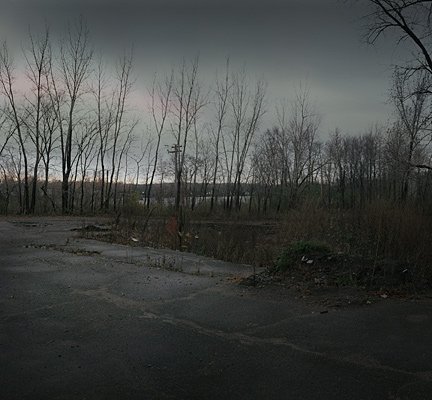
511 PROJECTS and The Cultural Services of Délégation générale du Québec are pleased to present "Nuits américaines", a curated exhibition of photographs by Canadian artist Isabelle Hayeur. This series of large-scale digital photomontages is part of an evolving body of work she began in 2004, and will be on view at the New York Photo Festival from May 14th to May 18th, 2008.
The photographs are varied in their composition, ranging from endless panoramas to sweeping architectural vistas and intimate indoor scenes. Her images are sourced from her visits to urban landscapes throughout the Americas-a juxtaposition of images that seamlessly merge the varying social, economic, cultural, and geographic landscapes of places such as Canada, Mexico, Argentina, and the United States. These images present a constructed reality to the viewer that contextualizes our progression towards globalization, a process that is continuously reshaping our inhabited environments. Although fictitious, these contrived settings are incredibly lifelike in their presentation and execution, prompting several relevant observations about our society. The viewer is confronted with the eradication of nature and rural areas due to urban sprawl; we see growing economic disparities and social divisions in our culture; contemporary forms of segregation, such as the creation of free trade zones or gated communities; and the outsourcing of jobs overseas.
This series defines the current political horizon and all it represents: gentrification, working-class communities, business districts, poverty-stricken neighbourhoods, outcasts, run-down apartments and threatened natural areas. The more we-the public-relinquish control of development in our own communities, the more private contractors are granted a carte blanche to redevelop, and fundamentally change, our neighbourhoods, our homes, and our lives. We are witnessing these gradual changes-politically, economically, socially-on a global scale; however, the effects of these changes manifest themselves most destructively in our local communities. Hayeur likens this gradual shift in the overall mood to the fleeting moment before daybreak, or at dusk, that one sees in her work. Twilight, used here as metaphor, is meant to suggest the many losses stemming from this evolution. Additionally, the strong contrast found in these compositions-the battle between light and shadow-represents the struggle between development and nature. In these scenes, Hayeur depicts the devastating consequences of a society suffering from mounting social inequalities and a crumbling infrastructure, ultimately leaving the viewer to question our progress as a society.
**
New York Photography Festival - NYPH 08
Tobacco Warehouse, Invitational Pavilion
Water and New Dock St,
Dumbo, Brooklyn NY, 11201
http://511gallery.com
http://www.nyphotofestival.com/
Elle Flanders
What Isn't There
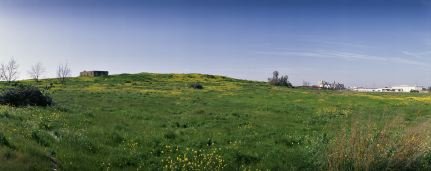
“What
Isn’t There,” on ongoing photo installation, presents four new
stunning large-scale backlit panoramic images, as well as striking
minimal prints by filmmaker Elle Flanders and architect Tamira
Sawatzky. These landscape photographs were shot in the places where
Palestinian villages once stood. The creation of the State of Israel in
1948 signaled the end of these villages through force and exile, and
since that time, they have gone back to nature. While Flanders and
Sawatzky may include small signs of past inhabitation in the images,
they are actually less concerned with what remains than with the
virtual absence of any remains
at all.
Flanders, who has a personal stake in this project, has been obsessively photographing sites of abandoned Palestinian villages over a 15-year period, showing new works as they materialize. Sawatzky, who recently begun working with Flanders, has contributed smaller images which act as beautifully nuanced responses, altering the narrative and carefully constructing yet another chapter in this rapidly disappearing history.
Elle Flanders writes, “Since I spent most of my youth in a country consumed with all things related to land—the greening of the desert, the building of place, the need to belong, etc.—landscape is an obvious point of departure for my work. Jewish artists who moved to the ‘holy land’ in its nascent years romanticized every aspect of the land. In these landscapes I re-examine some of the same motivations, but from a completely different vantage point.” Tamira Sawatzky adds: “As an architect, I relate differently to landscape: I think about not only its history, but the forms it takes and how structures relate to that place. I am working with only the memory of a history and re-imagining these spaces; I am constructing the ‘in between’ and giving a new materiality to both existent and non-existent structures. I see it as a socially-engaged architecture that interprets place as a political environment regardless of what still stands there.”
In
order to find the places where the villages once stood, Flanders and
Sawatzky have to rely on oral histories and on maps that pre-date the
creation of Israel. Tracing Palestinian maps onto Israeli ones, they
calculate where they might find a lost village. Then with a compass and
camera they set out to find it. They look for certain signs, e.g., the
Sabra cactus (not a plant that grows wild), fruit trees, the remains of
foundations, or a stonewall that once enclosed a garden.
May 2nd, 2008 – May 25th, 2008
At
the Gladstone Hotel, 2nd
Floor
graphicpictures@gmail.com
The Gladstone Hotel is situated at 1214 Queen Street West, Toronto, Canada
Chris Mitchell, Marketing Communications, and Exhibitions, chrism@gladstonehotel.com
For more information: http://www.gladstonehotel.com
I am holding an object in my hand. It is a small piece of paper with markings on it, coloured ink on a shiny surface. On the computer screen in front of me is another image, this time made of coloured pixels on an LCD screen. They are obviously not the same thing and yet they are. I would call them both a photograph of a girl, perhaps on a sand dune, although actually on a dropsheet in a studio. I know this because I took the photograph.
I know the girl's name. I know what lights were used. I can even look up the settings on the camera because the photograph was created digitally and there is technical information contained in the computer file. There it is, iso 400, f1.8, 50mm, 1/25 sec. I can see that it was made on a Canon Digital Rebel XT and I can even see that it was created at 10:32 am on March 12, 2008. Using another software program I know even more about the image, that I was using a custom white balance for instance, one set for the studio flash system, this explains why the image is so warm since I was shooting under tungsten lights.
So now I have three things, an image on paper, an image on a computer screen, both of which I can see are this girl, and a digital file which was what the camera actually created. It's called IMG_5756.jpg, actually the image below is called IMG_5756_550.jpg because I resized all the photos using a software program so that I could display them conveniently on the screen. I don't know anything else about the original digital file or this resized file beyond the file name. I can't see the girl or the light, or the contained camera information. In fact I can't see the file either, I can only see the file name displayed by the computer on the screen. The file itself is a series of magnetic ticks on a hard drive, or so I must assume.
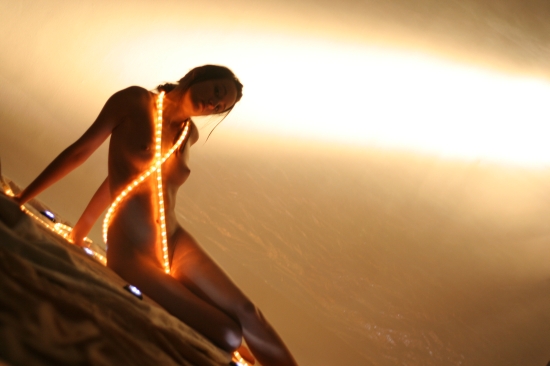
I can say "what is a photograph" but I no longer know exactly what I'm talking about. I have two digital files, an image on the screen and an image on paper. I don't know which is the object I should be talking about when I ask what a photograph is. What is the object, what is "this" that I should be talking about.
Roland Barthes, in "Camera Lucida" says in the second chapter of his book that a photograph carries, inextricably, its referent, the thing it refers to, that we cannot look at a photograph without seeing the referent, the photograph as object is essentially invisible. In this case we can't look at the image above without seeing the girl, the light, the background, the dropcloth. On the screen the photograph is even less of an object than the image on paper, at least there we have a piece of paper that is different than the background (everything else in the world of objects).
I'm happy with this, looking from the paper to the computer screen I can see that there is a common link between the two, it's the girl, the referent, and I am satisfied for the moment. Ah! I have one other image to add to the equation, my memory of the girl herself, sitting in the studio while I created the photograph. I saw her through the viewfinder of the camera (a view which I know does not agree with the image above since my viewfinder is cropped compared to the final image). I now can say that the two images have a referent that actually existed at one time, based on my memory of the shoot. Unlike Barthes or you the viewer, I need not assume, I know for a fact that this girl and this moment existed. The referent is real, or it was real at the instant in time represented by the image.
Unfortunately I also remember the computer file, that which was actually created by the camera at the moment of capture of the referent.
The idea that the photograph is inextricably linked to the referent seems to make some sense, and it certainly made even more sense when Barthes wrote his essay since photography at the time involved light sensitive physical materials such as a film negative and a print. Nowhere in that process was there not an image present. Unless you start to consider the photons that traveled between the image and the lens and from the lens to the film. One could also consider the potential but not actual image inherent in the exposed but not yet developed negative, or the same potential image in the print after exposure under the enlarger and before development. Is there a potential image in the digital file as well, waiting to be devloped by the correct software?
I have been lying to you. I didn't actually have a print in my hand, I just now sent the digital file through another software program to the printer and now I have a print, somewhat smudged by black ink at the tail end, drying on my desk in front of me. The print heads need cleaning apparently, and the object in my hand actually does not match what you see above, it has some black streaks on the right hand side, mostly off the image on a white border. I could have been lying about the reality of the referent as well I suppose, but I reassure you I am not.
This print in my hand obviously did not originate with the displayed image above, or with any other "real" image, but with the digital file that came from the camera. The "latent image" in this case is that file and not undeveloped film.
Since it is a latent image, is it also a "latent referent"? Surely not, the referent existed, the girl was never "latent" she existed in time and space, so did the light and the studio. Whether or not you now trust me, I myself believe this. So let us assume that a referent is not identical with a photograph since at one and the same time the referent can have existed but the image may be latent. So a photograph and a referent are linked but not identical. I'm sure this girl's boyfriend will be relieved to hear this.
So far I am not sure what a photograph is, but I know it is not identical with the referent although it seems very tightly associated. Even an undeveloped film or file seems to have a relationship with the referent such that we can be reasonably certain that once developed, the image will reflect the referent. I would be most surprised if I opened this same file with the same software I used earlier and got a photograph of a tree, or the back of my own head.
We may say "this is a photograph" but much more often we say "this is a photograph of..." which I would argue is our unspoken agreement with Barthes about the image being inextricably tied to the referent. "This is a photograph of a girl", unfortunately I still don't know which "this" I'm talking about. The screen above and the print undoubtedly carry the referent, the girl, along with them but I must return to the computer file.
Consider that while I have no trouble extracting the image and thus the referent from the file at the moment, what about in 100 years? Assuming this hard drive is still intact and still holding its magnetic charge at that time, will there be computer software that can read the file? Hardware that can interface with the drive?
I have, in the basement, 5.5 inch floppy disks that contain image files which I can no longer read. Are there photographs on those disks? I can no longer extract the referent image and so don't know if I can say that it is still attached to whatever file is on the disk. For that matter I can't say if there are files on the disks any longer. The best I can do is look at the floppy black plastic and assume that there is no visible damage so there "might" be information there. Regardless, it is information that is no longer available to me, those images are now effectively gone, they no longer exist and I can no longer refer to any referents they are associated with. I can still assume, however, that the referents did once exist. The files must contain "photographs of" something.
I really want to say that the photograph above and on my desk and on my hard drive is not only linked to the referent, but that it "is" the referent. That all these things we're talking about have at their common root the girl, the event that took place at 10:23am when I clicked the shutter and captured the image.
I will say it, I desire something to hang my hat on and I will have a nail. I will state that the undeveloped negative, the unprocessed computer file still contains the image, the referent. Now I have it, a photograph is a representation, a remembrance, a reference to an instant in time. I have the time, I have the image and I have the knowledge of creating the photograph.
I said before that I knew this moment existed, but that's not entirely true. I did not entirely deceive you again, but I just realized I have not been accurate in my remembrance to you or to myself. The floor in the studio is not tilted. The camera was, so this image is not an exact duplication of reality, at least not as far as the horizon line is concerned. Down in the image is not down on the earth.
What else have I mistaken? The light for one thing, or more accurately the colour of the light. Now that I look once more at the file I realize that the girl is not that colour, nor is the background. I know for a fact the background is white since I painted it myself. I also know that when I took this photograph the background looked white to me.
With my software I could fix this, I could correct the colour to what I remember it and make the background white.
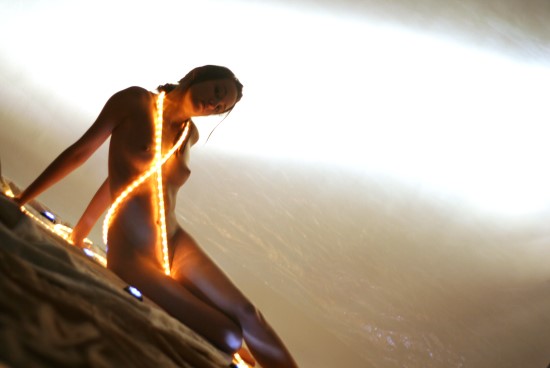
There, that is likely a more accurate image of what my eyes really saw when I took this photograph. Unfortunately it isn't what the camera recorded so I am not sure which image is the lie, even if the second referent is more accurate. Furthermore I don't like the second image, the background no longer looks like sand to me, it looks like a muddy white background with a wrinkled plastic sheet hanging in front of it. I also don't recall the rope lights being yellow, and the girl still looks a bit off colour.
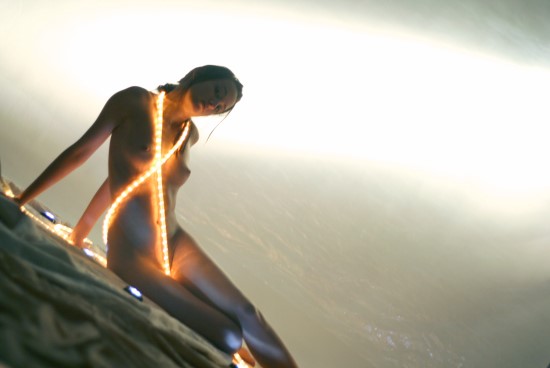
One last try. Assuming that the girl is the most important part of this photograph, I have colour balanced on her upper left thigh. Let's face it, I would be better off going to black and white than trying to balance a tungsten fresnel spot, a light rope and a bunch of LED lamps. This colour is never going to look like it did to my eye. I suppose this means that my first instinct, to simply go with what comes out of the camera, is as good as anything else I'm going to see in this image. Now that I look at the three images again I see that the first is almost balanced on the LED lamps.
All these changes so far are deliberate, in search of a more accurate referent. They are no different than when I used to crop, dodge and burn a print, when I used to get my fingers in the developer and rub the image to warm it up. The link between the photograph and the referent is still intact, I recall seeing all three of these images, or rather I recall seeing something reasonably close to all three. At this point I would choose the first image over either of the corrected ones strictly on artistic grounds, it says what I wanted to say (girl on infinite sand dunes with blazing sun) better than the other two (impossible mix of differently balanced light sources).
What if I poured fixer into the developer, or solarized the print by accidentally hitting the room lights instead of the safelight? What if the computer file becomes corrupted? Is it still a photograph?
I opened the image file and changed or deleted characters, and got a blank image or a dot, dead centre of the image. After several attempts I have concluded that it's hard get around whatever checking is being done so as to change the digital file directly and get a different image, we get no image which I will take to mean we get no photograph. With film we could expose it to light, shake it up and make bubbles, heat it, add chemicals, or any of a thousand other manipulations to make random changes to the negative or the print.
Instead of changing the "latent image", let's try changing the developer. Here I've opened the image as a hex file and shown just the first bit of it.
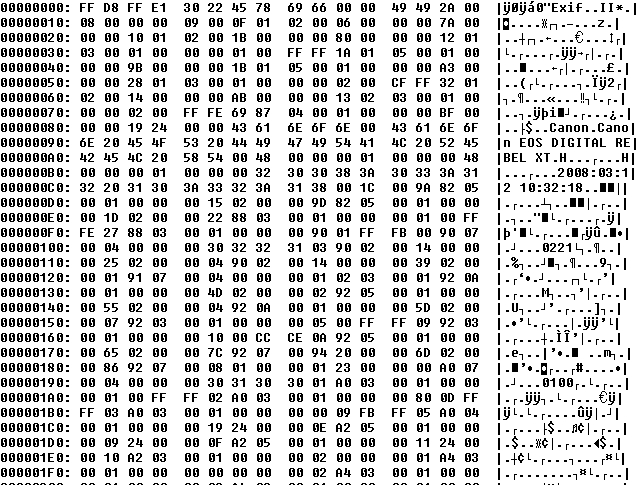
As an ascii file and a raw file:
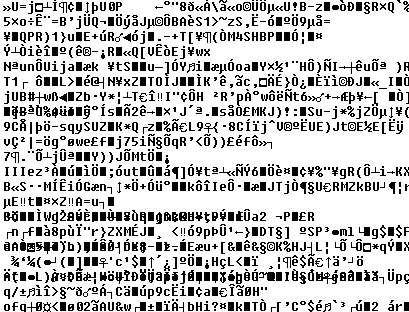
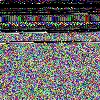
None of these are particularly interesting I must say, they are just too far from the referent, any referent, to qualify as a photograph, yet they are all jpeg image files and they all do come from the original file that was created by the camera.
Here is a change that isn't quite as dramatic, the file was opened and the colours reduced to 16.
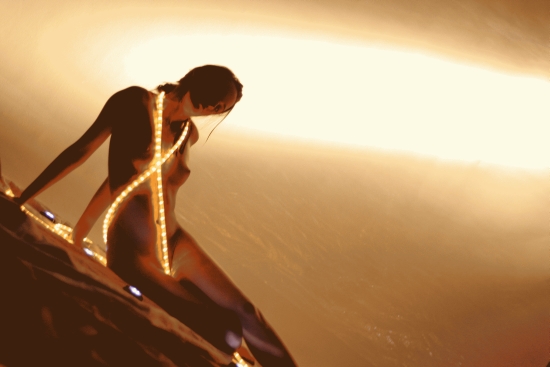
There is no doubt that image is derived from the photograph, and I can see the relationship to the referent, but I can see that we're somewhere on the line between the image from the camera and one of those above. Somewhere on that line where we get further and further away from the referent, I believe we lose what we call a photograph and we arrive at something else.
What does that say about my assumption that the referent is inherent in the digital file? When such radical changes can be made to a file by digital photo editing software, can we really say that a photograph is associated with a referent? I suggest that we can, after all we "start" from the file as produced by the camera and then proceed to "change" it with the editor.
At this point it might be tempting to look at the digital editing program again and speculate on whether or not images I create entirely in that program are photographs. Tempting but unnecessary since we would be confusing the program and what it creates with a photograph. Just as we could use fixer or developer to paint on a silver gelatin sheet, we can use photo-editing programs to create images that mimic photographs but are not photographs. It seems obvious that we need some sort of "camera" to produce a photograph, if only a pinhole box, but, on further thought, perhaps this is a discussion for another day.
At the moment then, we have arrived at the place where a photograph is any entity that contains an image or latent image of a referent, and that reflects or represents that referent somewhat accurately. The referent need not, indeed cannot exist any longer, but seems, if only on the evidence of the photograph itself (and yes this is a somewhat circular argument) to have actually existed at one time.
Not so very far from "A photograph is a photograph of" I suppose, and about as useful. I remain unconvinced and will surely think about this another time.
So it's Saturday, for those who are in Toronto here's a little self-quiz. Are you downtown at the Contact festival or are you at the airport at the Photographic and Digital Imaging show?
Me, I'm staying home. I figure that neither one is going to do me much good. I wouldn't end up buying that new remote trigger for my camera if I went to the equipment show, still too mad. You'd figure a solid state infra red remote would survive a three foot drop to the floor wouldn't you? After all my TV remote has survived two young kids for 10 years. I wonder if it has to do with the cost of a new Canon remote ($35 or so) and the cost of a TV remote (what, $5 maybe).
I once dropped my Pentax Spotmatic II down the side of a mountain and had to get the lens mount adjusted a little. Dropped my digital Rebel off my lap and had the lens in two pieces in my hand. Sigh, well never mind, the things only last three years or so, and I'm about 50,000 shutter clicks past dead as it is.
Anyway I suspect I may not get much out of Contact either, I'm becoming more and more convinced that I don't like giant prints, not that I look at them all that often but they're too damned trendy. Well art is nothing if not trendy, after all you gotta make a living... well everyone after the artist has to make a living right?
Wow, grumpy this morning. Time to go work out.
Hey, the Globe and Mail just revealed how to make real scenery look like miniatures by using thousand dollar tilt-shift lenses or thousand dollar Photoshop programs to create a small depth of field. Apparently it's a very popular technique. I dunno, it was sort of cool when I saw it in Re-Generation (Thomas and Hudson 2005) where Miklos Gaal showed some work from 2004. Here's my take on the thing using a $200 lens baby... not one of those third generation high tech models mind you, but the old traditional kind where you need to use all your fingers dammit!
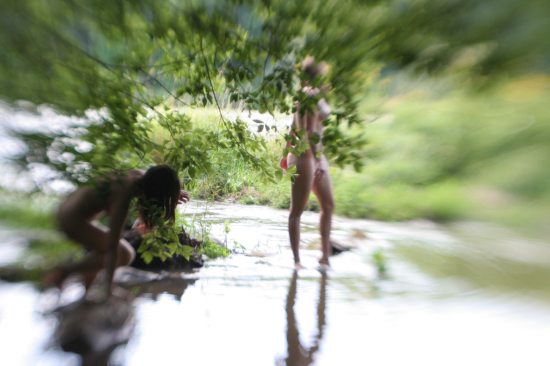
Kim Taylor 2006
I got kind of tired of the effect shortly after that when I started seeing it everywhere, weddings of course, but sports shots too. Just another example of technology leading trends in art, which incidentally brings me full circle back to the original question... maybe we can be both!
Hah, I'm still staying home to work out and after that I'm going to troll through this set of shots, it looks like fun and I just found it because one of the models asked me for a link to her shoots.

Drake
will be inspiring visionaries all month long with a host of events to
celebrate the Contact Photography Festival.
Each
night in the month of May, the Drake’s façade will be
transformed into an international art destination with a dynamic
installation of photographs and short videos, developed by MAGNUM, the
renowned cooperative photography agency. To facilitate this monumental
piece, Magnum in Motion’s Claudine Boeglin and Adrian Kelterborn will
be Drake’s artists in residence, sampling, mixing and curating visual
narratives nightly from the Magnum library as an experiment in
deconstructed randomness, inspired by the nature of a vintage jukebox.
Monday May 5, 6-8pm, DrakeSalon with Kirstin Hauksdóttir and Catherine Dean, FREE
Join Kristin Hauksdóttir, Head of Collections at the Reykjavik Museum of Photography in a conversation with Catherine Dean, curator from No.9: Contemporary Art & the Environment, (responsible for the art installation at Pearson International Airport) in a cultured conversation with Drake curator, Mia Nielsen. Together they will explore the work of the Icelandic Love Corporation and how these artists use Icelandic folk lore and cultural traditions to reach a global audience.
Wednesday May 7, 9-11pm, Larry Towell Performance and book signing, Underground, $15
Drake will host a rare performance by multimedia artist and Magnum photographer Larry Towell. Comprised of video, slide projection, live music and poetry, Towell will take viewers around the globe with his award winning images that explore the pull of family life and the push of politics, in photos taken over the last 25 years in places like El Salvador, Israel, Russia, France, Canada and many others. After the performance meet the artist for a book signing and preview of his forthcoming book, “The World From My Front Porch.”
Tuesday May 13, 7-9pm, Toronto Star Photojournalism: Multimedia Deconstructed, FREE
Join photojournalists from the Toronto Star newspaper in a workshop about harnessing that ‘magic moment’. Watch as these award winning photographers present their work, take questions and lead a discussion on the best practices for developing your photojournalistic skills.
Thursday May 29, 6-8pm, Contact Festival – It’s a Wrap, FREE
Grab
a cocktail and hang out with the Contact gang for the festival's
closing party at Drake, celebrating an unforgettable month of
photographic exhibitions and visionary events. Come early to catch a
seat and meet up with friends to compare notes, debate the best shows
and fete the close of the largest photography festival in the world.
Saturday May 3, 10, 17, 24, 31, noon-3:30pm, Queen West Gallery Tours, $25
Join art aficionado Betty Ann Jordan at the Drake every Saturday in May as she leads patrons on a tour of the best exhibitions in the Queen West Art + Design district. Betty Ann is a fun and unassuming art expert who will get you in touch with the major Contact shows and unveil some ‘gems’ that are a little off the beaten track.
Continuing to June 2, As The Sun Rises, FREE
Explore
Drake's Public Spaces through the month of May to see photographs and
video by the renowned Icelandic Love Corporation, as well as vibrant
documentary photos by NYC-based Jessica Craig-Martin and local
photo-based artist Tony Hafkenscheid
For reservations and ticket information, please call 416.531.5042 ext. 230.
Drake
Hotel – Hot Bed for Culture – 1150 Queen St. West (Between Dovercourt
and Dufferin). www.thedrakehotel.ca
Virginia Heffernan in a NY Times online article here says:
Well spotted, if a little late, but a lot of critics (and art buyers, gallerists, photo editors and other professionals) are coming onto the internet a bit late in the game.
The Internet Photo is indeed one that works best as a thumbnail as Virginia notes later, and popular photographers on any of the dozens of photo sharing sites will all use a similar strategy to get the attention of those flicking (flickring?) their eyes across hundreds or thousands of tiny images. The sites themselves also encourage various strategies for gaining "popularity" and image rank. All of which leads to a homogenizing of the images. Each website will have a slightly different flavour but all the images will be highly colour saturated, simple strong compositions, with a preponderance of glamour shots of naked women. What else would one expect?
The other thing that one could predict from these sites is that the technology will drive the style. Whatever default settings and technologies the big manufacturers put onto their entry level SLR cameras will determine what the shots look like. After all who looks for ways to subvert their camera?
A modern digital SLR makes extremely clean images that have saturated colours, and are very well exposed and flawlessly focused. The small sensors on most of the models owned by those who are on the sharing sites, combined with smaller aperatures on the kit zoom lenses mean a large depth of field. There is an unquestioned assumption that wherever the manufacturers seem to be going is the correct direction. If the latest model has an improved focusing system, then focus must be important. Low noise? Accurate, saturated colours? Of course! Lots of pixels so you can make massive prints, massive prints it is.
It's an iron clad internet rule that any "real" photographer will shoot in raw and then use Photoshop to convert, set levels to the correct position, correct colours, sharpen the image, and add lots of contrast by unsharp mask.
Is it any wonder that everything starts to look alike? The image is everything when all you have is technology (in the absence of things like concepts, ideas and imagination). Advanced image making now tends to be something slightly beyond what you get in the camera, software driven things like panoramas and high dynamic range photos. The first guy to read the manual for the latest camera model and editing software and finds one of these advanced techniques wins the praise for that month, provided he can get the word about his post out to his posse in time so they can all vote it up the list that is.
So what do these Flickr / Photosig / Photo.net / Usefilm images look like? Well actually they look a lot like commercial advertising photography. Your average Joe scoring high marks on Webshots or Photobucket is going to be producing images that would fit into any stock image site or glossy newsstand magazine produced in the last 15 years. Is it any wonder that commercial photographers are screaming to the heavens in their empty studios?
Ever wonder why the camera companies tilted their technology the way they did? Of course they were going to make it easier to do a good commercial shot, that's what everyone looks at, what everyone assumes is a "good shot". The technology works, unfortunately for those who used to have the skills and the expensive equipment to to it for pay.
What's left? Well I know what should be left alone, and that's the slick pics that are now so casually littered across Smugmug. I don't envy the kids coming out of photo programs across the world, they're going to have to find some sort of hook, some look that can't be found everywhere on the net, while not getting too far away from that same look since that's what we're all being trained to believe is "good". I think I'll stick with my old fashioned tastes and my experimentation with ways to make a thousand dollar camera look like it's worth five dollars.
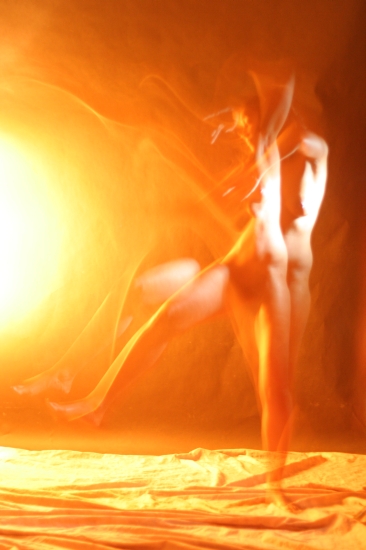
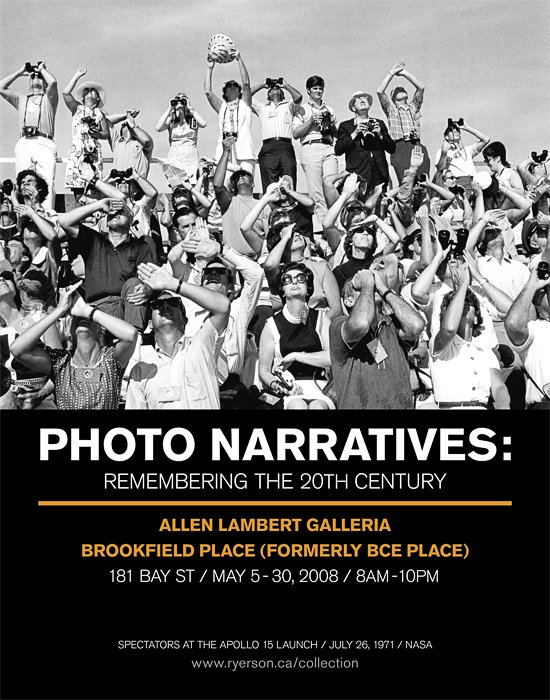
PHOTO
NARRATIVES:
REMEMBERING THE 20th CENTURY
Photo
Narratives: Remembering the 20th Century features digital
reproductions of compelling photographs from the Black Star collection
that cover many of the major social, political and cultural events of
the 20th century, with particular emphasis on significant historical
events.
Before
the
advent of nightly television broadcasts, the Internet, and online news,
local
and world news were visually conveyed through photographic
images in print. Whether in newspapers or picture magazines,
photographs of news events have, since the 1920s, been used to
represent what cannot be expressed merely through words. Shown in
sequenced layouts these photographs create what is known as a
photo-essay.
The
photographs in Photo Narratives: Remembering the 20th
Century are drawn from a collection of images assembled over a
period of eighty years at the Black Star photo agency in New York City.
Now housed at Ryerson University, the historical Black Star collection
is comprised of more than a quarter million photographs and includes
the work of more than 3,000 different image-makers, many of them
acknowledged as individuals who helped define picture journalism as it
evolved through the twentieth century.
ALLEN
LAMBERT GALLERIA
BROOKFIELD PLACE (FORMERLY BCE PLACE)
181 BAY ST,
TORONTO / MAY 4 - 30, 2008 / 8AM - 10PM
www.ryerson.ca/collection
This
feature
exhibition for CONTACT 2008 has been made possible through a
partnership with Hewlett Packard Canada. Using state-of-the-art HP
technology, students and staff at Ryerson University’s School of Image
Arts have been able to create digital reproductions of significant
photographs found in Ryerson’s Black Star Historical Black & White
Photography Collection.
RYERSON
UNIVERSITY & CONTACT EXHIBITIONS IN 2008
The
Public Stage: Selected Street Photographs from the Mira Godard Study
Centre, Ryerson University
Ryerson Gallery / 80 Spadina Ave / Suite 305
April
9 - May 10
Reception: May 8, 6 - 9pm
This
student-curated exhibition examines the nature of street photography
and the manner in which it portrays the “theatre of the everyday.” The
exhibition features works by Eugène Atget, Henri
Cartier-Bresson, Dave Heath, Michel Lambeth and Gabor Szilasi, among
others.
When
Brothers Fight: The Gaza Strip / Dominic Nahr
Ryerson Gallery / 80 Spadina Ave / Suite 305
May
14
- June 14
Reception: May 15, 6 - 9pm
Dominic
Nahr’s
photographs are a disturbing testimony of what happens when hope breaks
down and a community loses sight of its common aims in a
brother-against-brother struggle for control.
Noir
Architecture / Hamish Robertson
Image Arts Gallery / 122 Bond St / 3rd Floor
May
19
-31
Reception: May 20, 6 - 8pm
Noir
Architecture showcases photographs by Hamish Robertson that illustrate
the downtown core of Toronto, long after midnight. These images of
deserted streets are bound together by a poetic text exploring the
connotations that arise when one photograph is placed next to another.
www.ryerson.ca/collection – Ryerson’s Black Star
Historical Black & White Collection
www.ryersongallery.ca – the Ryerson Gallery
www.imagearts.ryerson.ca – the School of Image
Arts at Ryerson
www.ryersonlectures.ca – Kodak Lecture Series
www.contactphoto.com –
CONTACT photography festival
Media Contact:
Heather
Kearney
Ryerson University
416-979-5000 x.4282
hkearney@ryerson.ca

Ryoko
Suzuki, Anikora - Seifuku no. 2, 2007, 47" x 71" Lambda print
Ryoko Suzuki
Anikora-Seifuku
Chad
Gerth
Empty Lots
Opening
Reception
May 3, 2-5 pm
Part
of CONTACT Photography Festival
CORKIN GALLERY
Distillery
District 55 Mill St., bldg 61 Toronto, ON M5A 3C4
Gallery Hours: Tues – Sat 10–6 Sun 12–5
(416) 979-1980
www.corkingallery.com
The
Corkin Gallery is proud to present exhibitions by Japanese artist Ryoko
Suzuki and American artist Chad Gerth.
Addressing this year's CONTACT Festival theme, Between Memory and
History, both exhibitions question the photographer's dual role as
documentarian and artist, as one who acts as the purveyor of social
observation and the creator of complex visual commentary.
In Anikora
- Seifuku,
Ryoko Suzuki challenges the conventional understanding of
social documentary with digitally constructed images that comment on
the specific social roles of women living in contemporary Japan.
Depicting popular Japanese dolls, akin to Barbie dolls in North
America, the artist's face is superimposed to create uncanny, larger
than life-size characters that illustrate traditionally "appropriate"
gender roles: nurse, schoolgirl and waitress, among others. The
distorted, unrealistic bodies of the dolls, reminiscent of
animé, express the notion of the supercute, or "kawaii." This
idea confronts the cute, but often highly erotic, fictionalized
portrayal of women that is prevalent in Japanese comics, advertising
and children's toys.
Born
in Hokkaido, Japan, Suzuki creates photographic works using digital
processes. She has participated in group and solo exhibitions at
museums in Japan, Korea and China, including a solo exhibition at the
Museum of Contemporary Art in Sapporo, Japan. Her work is held in
public collections, including the Tokyo Metropolitan Museum of
Photography, the Higashikawa Culture Gallery and the Shanghai Art
Museum. This is her first exhibition in Toronto.
Chad
Gerth's
Empty Lots series explores and documents the intricacies of urban
and human landscapes through images of abandoned parking lots slowly
being reclaimed by nature. Made in Gerth's hometown of Chicago, these
images represent the contemporary city not through its distinctive
skyline but through the flatness of its terrain and the common yet
unremarkable areas that exist in any city. Shot from a high, almost
vertiginous point of view, the cityscape is transformed into a barely
recognizable, abstract plane of shape and colour. The modernist,
machine-like grid construction of so many North American cities is here
exemplified by the rigidly defined boundaries of both the lots and the
photographs themselves, tightly cropped and carefully composed. Gerth
calls these spaces, these empty lots, "gaps of nothingness ... like
grass in the cracks of the sidewalk or a rhizomic void in the skyline."
They exist not as places of civic or social importance, but as vacant
spaces beyond control of the city.
Born
in Canada, Gerth completed studies at the Ryerson University School of
Image Arts (BFA) and the School of the Art Institute in Chicago (MFA);
he has exhibited widely in Canada and the United States. His
photographs, often produced in series, treat themes of technology,
nature, commerce and contemporary culture with a strong conceptual
approach.
Marc
Séguin
Roadkill
Opening Reception
May 3, 2-5 pm
Marc
Séguin's series Roadkill consists of large
scale, figurative oil paintings that explore the communicative
potential of traditional artistic methods. Incorporating entirely
original found material - the roadkill of the title is actual roadkill
attached to the canvas - these works are surreal, haunting meditations
that eliminate all narrative potential. Ghost-like apparitions float in
empty space, with the faces and identities of these strange figures
obscured by paint, masks and hoods. Employing his signature style,
Séguin creates complex, emotionally charged works with little
embellishment. At its core his work examines not only the dark,
hallucinatory world of his subjects but the very processes and methods
of oil painting itself.
Marc
Séguin's work has been exhibited nationally and internationally
and is in major public collections throughout Canada. He lives and
works in New York City.
For more information please visit www.corkingallery.com
Media Contact: Jayne Wilkinson info@corkingallery.com
(416) 979-1980
CORKIN
GALLERY
Distillery District 55 Mill St., bldg 61 Toronto, ON M5A 3C4
Gallery Hours: Tues – Sat 10–6 Sun 12–5
(416) 979-1980
www.corkingallery.com

